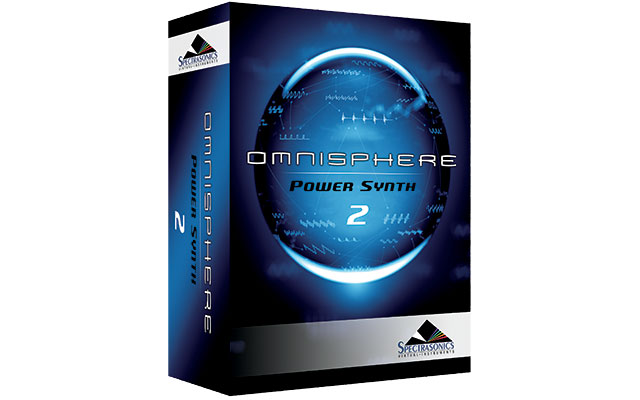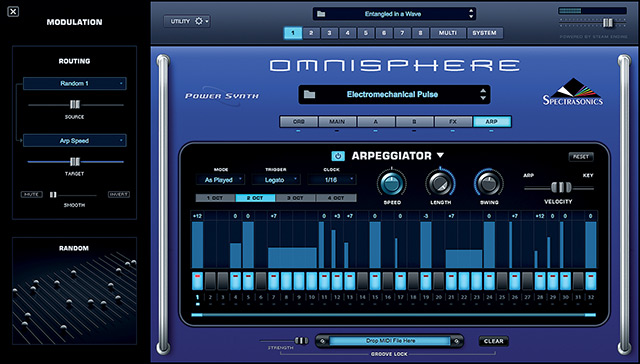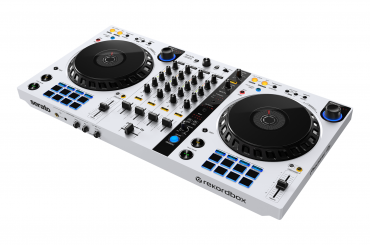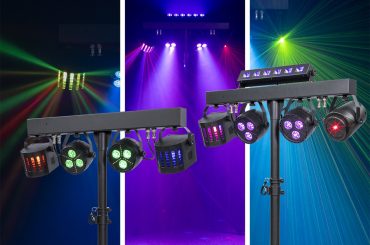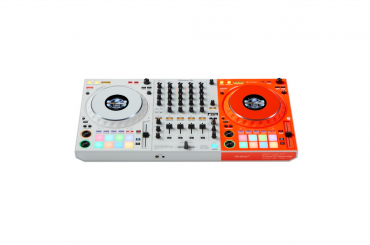In an age when so many software instrument companies are trying to be all things to all people, Spectrasonics continues to carve out its niche by remaining loyal to its three virtual instruments (Stylus RMX, Trillian and Omnisphere).
This year brings us a major upgrade to my favorite Spectrasonics instrument, Omnisphere. I reviewed Omnisphere power synth a few years ago, so this review is going to highlight what I feel are some of the key new features found in Omnisphere 2.
Let’s begin with the addition of over 4,500 new sounds and patches, bringing the total to over 12,000. We all love sounds, right? And, this new sound library includes a special “Spotlight EDM” batch of presets, along with some amazing new circuit-bent sound sources. Granular synthesis is very much a part of this upgrade, boasting a powerful new algorithm, along with a new category of phrase-based sound sources to use with Granular synthesis. There are eight new filter types and a new Unison Drift, which models the behavior of polyphonic analog synths.
Best Additions: My favorite new feature, Sound Lock, offers the ability to import outside audio, and use it as a soundsource. You can take an existing loop from your library, import it, give it a bit of Granular synthesis, and you will emerge with a brand new sound that is unrecognizable from the original soundsource. Trust me, I will be using this feature quite a bit.
My second favorite new feature is the ability to lock the arpeggio pattern while browsing through sounds. As a big fan and user of Omnisphere 1, I had always wished there was an easy way to preserve an arpeggio pattern from one sound and transfer it to another. Wish no more—here it is!
With such a comprehensive sound library, an enhanced browsing experience has been implemented. A new feature called Sound Match instantly locates any related sounds in the sound library. Sound Lock allows you choose which sound characteristics you want to “lock” while browsing. From a drop-down menu, you can check or uncheck your sound characteristics, like Polyphony, Tuning Scale, and Arpeggiator, just to name a few.
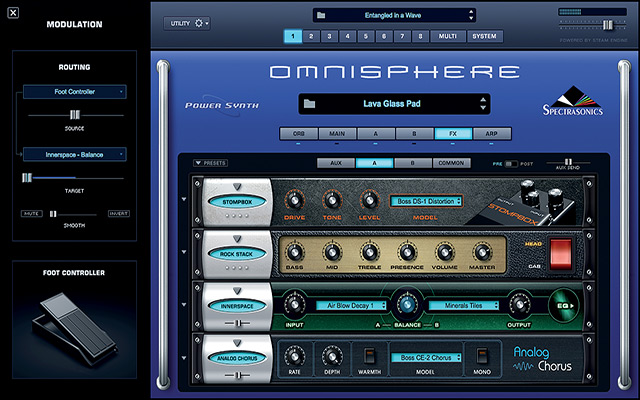
Effects: The effects section has received a bit of attention for this update. There are 25 new effects units and new flexible effects features. Some of the new effects units are Vintage Tremolo, Crying Wah and Toxic Smasher.
You can now stack up to 16 effects per patch, with a full matrix modulation of each effect slot. There are hundreds of new FX presets and racks included, as well as the ability to “lock” the FX while browsing.
Live Mode now offers key splits, allowing for the key zone to be split between two sounds, which is extremely useful for live playing, and an updated Global Clock Speed allows for sounds to be played in half-time or double-time.
I have often wondered how Eric Persing and the Spectrasonics team are able to create such a wonderful-sounding synth engine. From the sonic richness to the “in-your-face” edginess, it’s all there. Sometimes, I just use Omnisphere for all of my synth parts on in my productions, because it just sounds so good and fills up the sonic space nicely.
Conclusions & Cost: This is a fantastic upgrade to an already legendary virtual synth. Yes, the library is huge, but it’s worth it. And if your computer’s hard drive is full, you can install the library on an external drive.
To buy Omnisphere 2 outright is $499. The standard upgrade (for all version 1.x owners) is $249 and the VIP upgrade (owners of Omnisphere 1, Trillian and Stylus RMX) is $199. If you purchased Omnisphere 1 between October of 2014 and May of this year, you fall into the grace period and will receive a free upgrade.
If you have any questions for Making Tracks, please send them to djtimes@testa.com.


